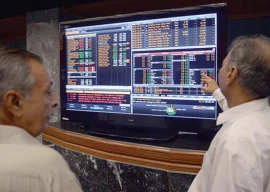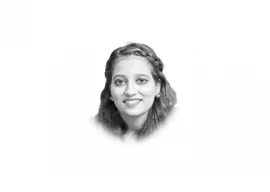
As a strong supporter of close relations with India, and nurturing the dream of next time travelling by land from Karachi to Dacca, and on the GT road built by Sher Shah Suri to savour the common historical and cultural heritage, I believe my Pakistani brethren need a reality check when comparing our two countries.
In order to progress we need to seek the objective truth.
First, there is really no comparison between India and Pakistan. Pakistan was cutout of India in fragments, to form a completely new entity 64 years ago. We had no; institutions, universities, bureaucracy, military, hardly any industry, and not even an airline or our own currency; when we achieved independence. India had all these and much more, functioning since ages. Delhi had been seat of power for centuries with complete infrastructure. We had to build our capital from scratch. India’s population is six times and land area more than four times that of Pakistan. It is at least six times bigger in almost every respect, and probably hundred times in the number of PhDs, it produces, just to give an example.
No doubt, the last decade has pushed India to the centre of the world stage because of impressive economic progress, market size and sustained democracy. Its huge military has enhanced its appeal to global interests. Its tourism and film industries further reinforced its international image. However, there is still another side of shining India that is usually overlooked by awestruck outsiders, especially Pakistanis.
According to an Oxford University study, ‘55 percent of India’s population of 1.1 billion, or 645 million people (three times the size of Pakistan), are living in poverty. While poverty in Africa is often highlighted, there was more acute poverty in India than many African countries combined. Poverty in eight Indian states—Bihar, Chhattisgarh, Jharkhand, Madhya Pradesh, Orissa, Rajasthan, Uttar Pradesh, and West Bengal—exceeded that of the 26 poorest African countries. The poverty level among India’s so-called Scheduled Tribes is 81.4%.
Successive Indian governments led by Congress and the Hindu supremacist Bharatiya Janatha Party (BJP) are responsible for economic policies that have boosted the profits of big business and the wealth of a tiny layer at the expense of the working class and rural poor.
By focusing on a broader range of factors, the Oxford University study has highlighted the continuing lack of basic facilities for the majority of the Indian population. Governments at the national and state levels have failed to provide even the most rudimentary assistance for hundreds of millions of people.
As a result of the lack of health care and food, 61 million children in India are stunted, the largest figure for any country, according to a Unicef report. The Financial Express commented that: “The wealth amassed by Indian billionaires—estimated at $340.9 billion by Forbes magazine — is nearly 31% of the country’s total GDP. This gives them nearly three times more weight in the economy than their American counterparts and over ten times of those in China. The GDP share of Indian billionaires’ wealth is more than four times of the global average.”
In India’s financial capital of Mumbai, more than six million desperately poor people eke out an existence in the slums. Mumbai’s gleaming skyscrapers that symbolise India’s economic growth sit alongside makeshift hovels.
India’s business elite likes to justify their position in society on the basis of their own personal initiative, acumen and drive. In reality, their wealth is the product of the exploitation of the country’s huge reserves of cheap labour and depends on the continued impoverishment of the rest of the population. This worsening social divide will inevitably produce a rebellion against the appalling conditions created by profit system and the ruling elite that defend and benefit from it.
The purpose here is not to demean one country in order to cover-up weakness of the other, but to objectively evaluate the strengths and weakness of both, so that we could arrive at realistic goals for cooperation and mutual benefit.
Both India and Pakistan have deep-rooted problems but not necessarily identical in nature. Therefore, while we can certainly learn a great deal from each other because of our shared background, we cannot blindly follow the other in every sphere. We have our own strengths, weaknesses, opportunities and threats, and must assess them in our own original way to move forward.
The contributor writes on socioeconomics and has a background in trading and exports in the private sector.
Published in The Express Tribune, February 20th, 2012.























COMMENTS
Comments are moderated and generally will be posted if they are on-topic and not abusive.
For more information, please see our Comments FAQ